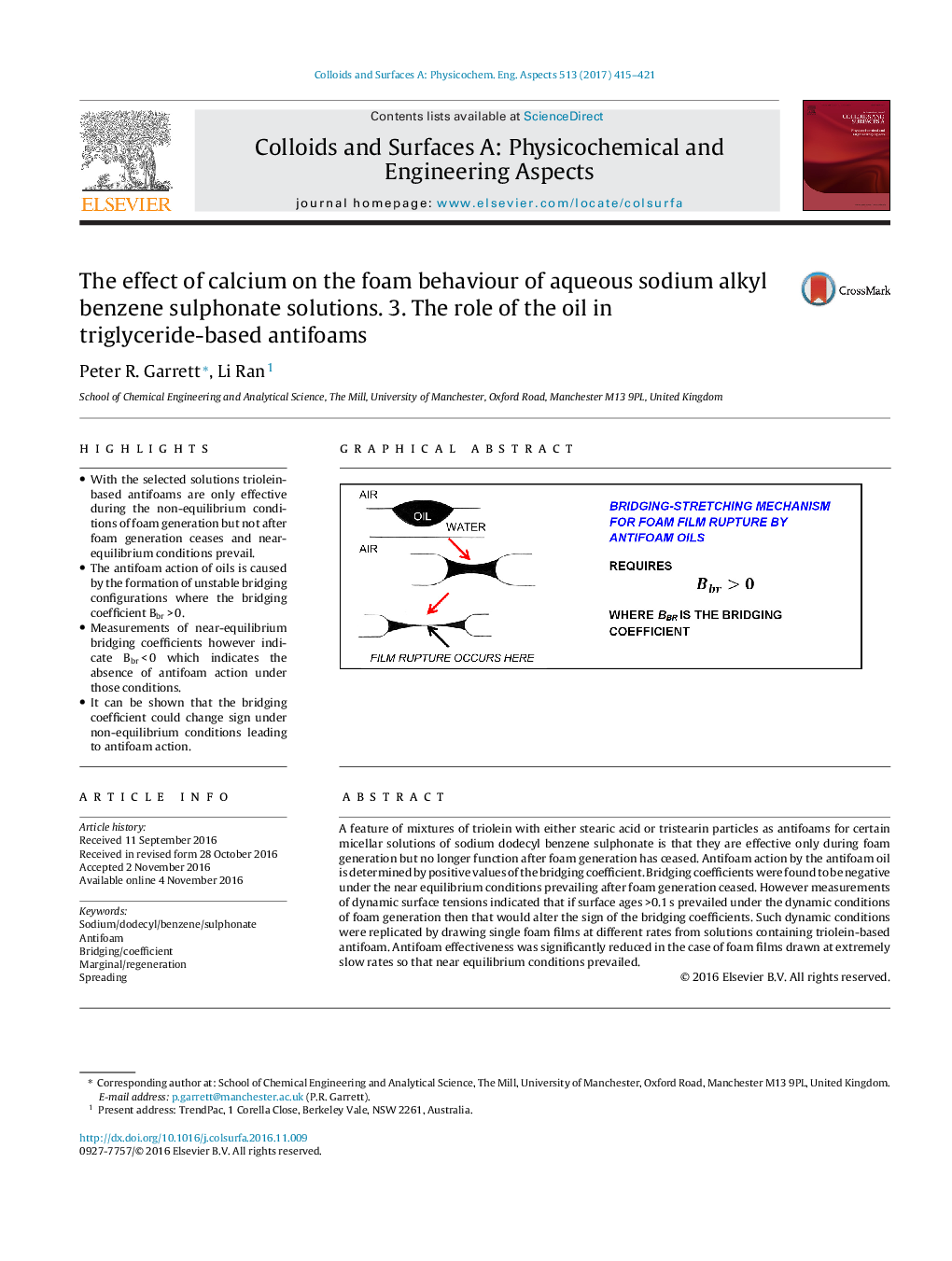| Article ID | Journal | Published Year | Pages | File Type |
|---|---|---|---|---|
| 4982575 | Colloids and Surfaces A: Physicochemical and Engineering Aspects | 2017 | 7 Pages |
⿢With the selected solutions triolein-based antifoams are only effective during the non-equilibrium conditions of foam generation but not after foam generation ceases and near-equilibrium conditions prevail.⿢The antifoam action of oils is caused by the formation of unstable bridging configurations where the bridging coefficient Bbr > 0.⿢Measurements of near-equilibrium bridging coefficients however indicate Bbr < 0 which indicates the absence of antifoam action under those conditions.⿢It can be shown that the bridging coefficient could change sign under non-equilibrium conditions leading to antifoam action.
A feature of mixtures of triolein with either stearic acid or tristearin particles as antifoams for certain micellar solutions of sodium dodecyl benzene sulphonate is that they are effective only during foam generation but no longer function after foam generation has ceased. Antifoam action by the antifoam oil is determined by positive values of the bridging coefficient. Bridging coefficients were found to be negative under the near equilibrium conditions prevailing after foam generation ceased. However measurements of dynamic surface tensions indicated that if surface ages >0.1Â s prevailed under the dynamic conditions of foam generation then that would alter the sign of the bridging coefficients. Such dynamic conditions were replicated by drawing single foam films at different rates from solutions containing triolein-based antifoam. Antifoam effectiveness was significantly reduced in the case of foam films drawn at extremely slow rates so that near equilibrium conditions prevailed.
Graphical abstractDownload high-res image (150KB)Download full-size image
